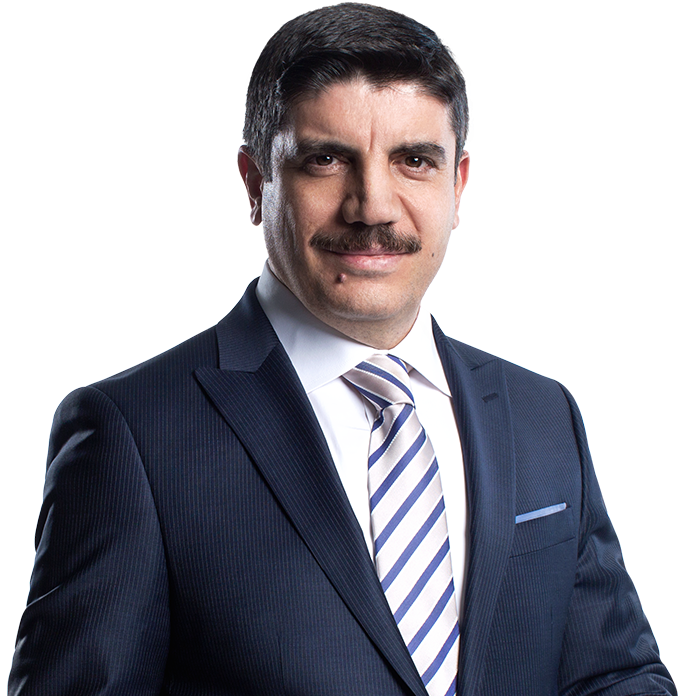George W. Bush, who took the presidential seat after Bill Clinton, essentially carried out an election campaign that promised restoration within the U.S. However, back in that period, it was known that he was under the influence of a group known as the neo-conservationists, who advocated that the U.S. could not and should not escape the obligations brought on by the global order. This group defended the notion that the U.S.’ power needed to be utilized in every aspect and in all crisis areas threatening the world order.
The Bush administration was able to convince the public of this perspective using the Sept. 11 attacks. The U.S. witnessed an attack on its shores for the first time after World War II and the support of the American middle class – which as described by the legendary TV series “Mad Men,” has studied a little collage, earns well but thinks they earn little because they work long hours, wants a lawnmower and hammock, and has many electrical tools in their garage they don’t use – for the expansion of U.S. power increased.
The Bush administration did not neglect adding philosophical depth to the expansion of the American power domain by using the doctrine dubbed Pre-Emptive Strike. According to the Pre-Emptive Strike Doctrine, strikes must be redefined as the world has become completely unsafe. The Sept. 11 attacks demonstrated that a state may become the target not only of another state but also various crime or terrorist organizations. Hence, the U.S. must take precautions in regions it feels may pose a threat for itself, before the actor it perceives as a threat brings the attack to its own shores and in this context, reserve the right to intervene.
In the context of this doctrine that changed or shaped the content of concrete and debatable terms in international law and established international relations literature like intervention, in addition to relatively more concrete terms like war and peace, and allowed them to be re-discussed all over again and in a different format, U.S. military power continued to expand during the Bush era. The extension of the Iraq Operation that followed the Afghanistan Operation and was conducted with the excuse that Saddam had nuclear missiles led to disturbances in the U.S. community regarding the use of U.S. troops outside the U.S.
The Barack Obama administration that took over Bush’s legacy completely rejected the Bush Doctrine and developed a strategy called Smart Power. According to this strategy, the soldiers of local U.S. ally countries – referred to as pivotal states – would be used in crisis areas instead of U.S. troops. This was actually a controlled step taken to return the U.S. military force that expanded without limit during the Bush era. The aim was to reduce the U.S.’ military costs and manage processes without making any concessions to the global power position – in other words, to “lead from behind.”
Obama’s Smart Power approach was the reason why the Syria crisis was left without a solution. This approach, which led to the U.S. trying to trying to remain inside the crisis while also trying to ditch responsibility, caused Washington to become ineffective and paved the way for Russia to become a strong actor in the Middle East for the first time after the Cold War era. In the Syria example, leading from behind caused the U.S. to lose leadership. The U.S., which was expected to fulfill its role in the global system – or rather, not throw a spanner in the works to ensure the continuity of the system – indicated that it was time for self-criticism.
Looking at the process independently of U.S. President Donald Trump’s caricaturist states, it could be said that the current U.S. administration is carrying out this process. Of course, with their own specific detections and prescriptions.
Unlike Obama, the Trump administration believes that it’s the global system that threatens the U.S.’s future, not countries. The current system’s continuity is ensured by obtaining manufactured goods from China or the European markets, despite the U.S. constantly printing dollars, and the production economy of the U.S. is diminishing by the day as unemployment rates rise. In other words, according to the Trump administration, the U.S. is the one carrying the system’s burden while China or the EU are the ones who win. At this point, the U.S. is on the verge of trade wars with both China and the EU. What the Trump administration is saying is simple: You must import from us as we import from you, otherwise we will obtain the profits we plan on earning from imports by imposing additional taxes to the products we import from you.
Furthermore, the support of ally countries regarding public goods the U.S. has been produced for an extended period of time is also requested. For example, support is demanded from countries under NATO to contribute more to the spending of the alliance. As tensions rise with allies and trade partners, evaluating warm messages from the U.S. to countries like North Korea in this context may be enlightening. The Trump administration’s aim is not to alter alliances but to reshape the global system. It does not seem like an easy task to accomplish. At a time in which the conflict potential in our region has increased, it may be beneficial to evaluate the value of Turkey’s June 24 elections and choosing stability from this perspective.




















